Even by the standards of Pakistan’s perpetually unstable politics, the last ten weeks in the country have been exceptionally turbulent. Pakistan has a new government as of April 11 after Imran Khan was forced out via a vote of no confidence. The weeks leading up to the vote, from the filing of the motion on March 8 to the vote on April 10, were dramatic and full of intrigue. Now, the country is in economic and political crisis. Shahbaz Sharif’s new government has been in a state of decision paralysis and is struggling to find its footing, while the ousted prime minister is leading rallies across the country attacking the government’s legitimacy and calling for fresh elections. At the same time, Pakistan is also in the grip of an acute climate emergency. It’s not only political temperatures that are spiking: an unprecedented heat wave has enveloped Pakistan for weeks.
The fall of Khan’s government
Crucial to the current crisis is understanding how Khan’s government fell. While Khan was Pakistan’s first prime minister to be ousted via a no-confidence vote, he joined each of his predecessors as prime minister in not lasting five years — the length of parliament’s electoral term — in office. Pakistan’s major opposition parties had been clamoring for Khan’s exit since he came into office — calling him “selected” by the military as opposed to “elected” — and had formed an alliance, the Pakistan Democratic Movement (PDM), in the fall of 2020 for that purpose. This spring, the opposition gained traction. On the surface, the opposition blamed governance and economic failures under Khan. But the underlying reason their maneuvers were successful was that Khan had lost the support of Pakistan’s military, which helped him rise to power.
Several factors were responsible for the fracture between Khan and the military, who previously had functioned on a much-touted “same page.” The biggest was an impasse over the transfer of the director general of the Inter Services Intelligence (ISI) in October 2021. Khan refused to sign off on the director general’s transfer, already approved by the military, for weeks. The then-ISI chief was a Khan loyalist, and speculation was that Khan wanted him to be around for the next election (or perhaps even to appoint him the next army chief).
Once Khan lost the military’s support — though the military said it had become neutral — space was allowed to the opposition to make their moves. Two small parties allied with Khan in the ruling coalition switched to the opposition, enough to deprive him of his razor-thin majority in the National Assembly.
Khan hatched a conspiracy theory to blame for his government’s collapse — alleging, without evidence, U.S. “regime change” for following an “independent foreign policy,” and claiming “local abettors” were responsible — claims that Pakistan’s National Security Committee has rebuffed. But Khan and his allies have also alluded to the military being responsible for his exit — sometimes in veiled language and sometimes pointing fingers more directly at the “neutrals,” as they now refer to the military. In so doing, they are testing the limits of political confrontation with the military, receding only when it pushes back on their claims.
An intense polarization
Khan has used his ejection to galvanize his supporters. Day after day, in huge rallies across the country, he calls the new government an “imported government” and the new prime minister a “crime minister.” Khan has used his rallies and interviews to command media attention, and argues that his government’s fall returned to power the corrupt politicians that are responsible for Pakistan’s problems. His supporters, many of them middle class, young, and urban, and furious at what they see as Khan’s unceremonious, orchestrated ousting, repeat his words on social media. With this narrative of grievance, Khan aims to undermine the new government’s legitimacy; his party resigned from parliament and he is calling for fresh elections. He now plans to lead a “freedom march” to Islamabad, likely later this month, to further pressure the government for elections.
By contrast, supporters of the parties that constitute the government see Khan’s exit as having occurred democratically and see his politics as dangerous. Pakistan today has echoes of the post-January 6 moment in the United States, a polarization so deep that each faction sees no validity in the other’s arguments. Khan’s supporters in particular distrust anything the new government or the military says. In recent weeks, politicians from each side have also resorted to using religion to attack the other side, dangerous in a country where the weaponization of religion can spell a death sentence.
The new government
The new government, led by the PML-N’s Shahbaz Sharif, faces formidable challenges — and not just from Khan. Shahbaz’s brother, three-time former prime minister Nawaz Sharif, who was deposed in 2017 on corruption charges and now lives in London, still exercises outsized control over the party, and indeed the government. Shahbaz, a three-time former chief minister of Pakistan’s largest province of Punjab, has throughout his political career played second fiddle to the more charismatic Nawaz. Last week, the prime minister and key members of his cabinet made a sudden trip to London to consult with Nawaz on the direction of the new government. While they were overseas, Pakistan’s economy continued its downward spiral. The rupee continued its precipitous slide relative to the dollar; the stock market also lost value.
The government faces a key decision on whether to continue costly, unsustainable fuel subsidies that Khan’s government installed, and that the International Monetary Fund wants removed as a precondition for renewing Pakistan’s loan program. Removing subsidies would certainly be unpopular, which worries a government with limited time in office before the next election. So far the government has stalled, announcing earlier this week, against its own finance minister’s advice, that it would maintain subsidies (for now).
Shahbaz’s overall hesitancy likely reflects deference to Nawaz and his team, who may have different views, and the fact that he commands an unwieldy coalition of rival parties, who will be competing against each other in the next election. But part of the indecision has to do with the fact that the main goal of the PDM was to oust Khan; they did not actually devise an alternate governance plan or economic strategy before coming into power. That lack of a plan is now showing in the face of Pakistan’s economic crisis.
The next election
A major question contributing to the political uncertainty in Pakistan is the timing of the next election, which must be held by the summer of 2023. Khan has made clear that he wants to ride his present momentum to immediate elections. In the days preceding his downfall, he aimed to deprive the then-opposition of a runway in government by extra-constitutionally dissolving parliament, a decision Pakistan’s Supreme Court (correctly) reversed. The new government, for its part, can use its time in power to turn things in its favor, including resolving outstanding corruption cases.
There is the question of whether Nawaz can or will return to Pakistan before the next election. If he does, that could boost the PML-N’s base, but if he does not face prosecution on his return, that will bolster Khan’s argument that the Sharifs have politically manipulated the corruption cases against them. The PML-N also faces considerable hurdles, including an economic crisis that is partially shaped by exogenous factors, a tussle over power in Punjab, and a president who belongs to and is loyal to Khan’s party. The coalition government this week has said it will not go to early elections; former president Asif Ali Zardari has insisted that elections not be held before parliament can undertake electoral reform.
Whenever the next election is held, it’s far from clear what the outcome will be. What matters in Pakistan’s parliamentary system is which party can get the most “electables” — powerful politicians in local constituencies — on their side. Large urban rallies may attest to Khan’s personal popularity, but will not necessarily define how his party does in parliamentary elections. The other factor, one that has historically determined which party electable politicians align themselves with, is where the powerful military’s support is leaning.
The bottom line
That brings us to the bottom line. The fundamentals of the system in Pakistan, beneath the intense ongoing political tug of war, remain the same. What matters for political success is whether you have the support of Pakistan’s military. Political parties now directly point to the military’s interference in politics, but only when they are in opposition; when they are in government and enjoy that support, they do little to challenge it. This was true of Khan’s party when it was in power, and it is true of Sharif’s government now.
In the end, what Pakistan’s soaring political tension amounts to is an opportunistic struggle for power. It has left the country a political tinderbox. And in all of it, little regard is displayed on either side for the ongoing suffering of ordinary Pakistanis, who continue to pay the price for the country’s long history of political instability.
The Brookings Institution is committed to quality, independence, and impact.
We are supported by a diverse array of funders. In line with our values and policies, each Brookings publication represents the sole views of its author(s).

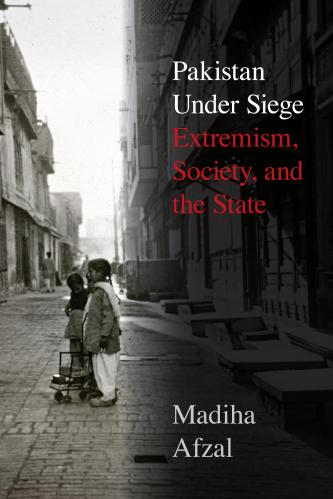
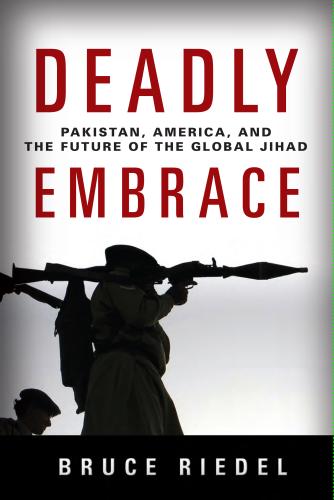
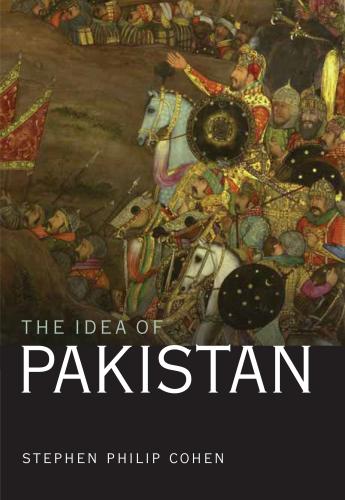
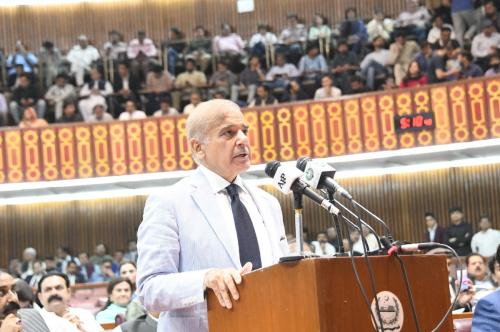
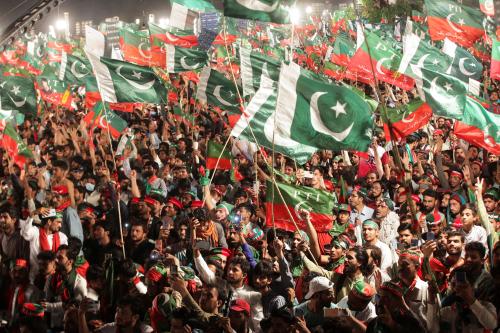
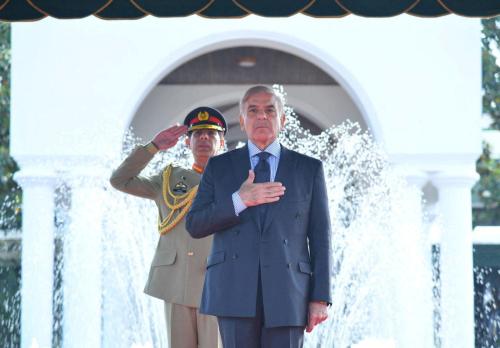

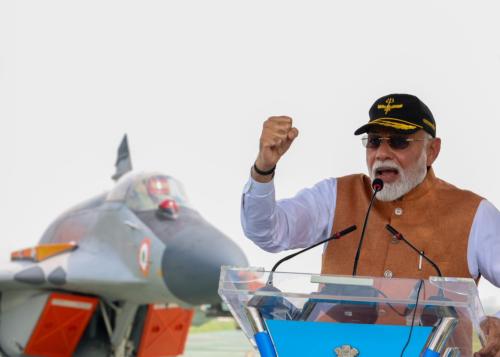

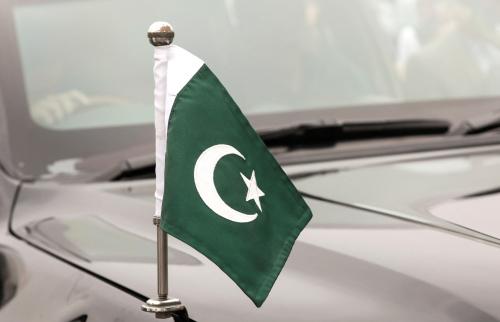
Commentary
What is happening in Pakistan’s continuing crisis?
May 20, 2022